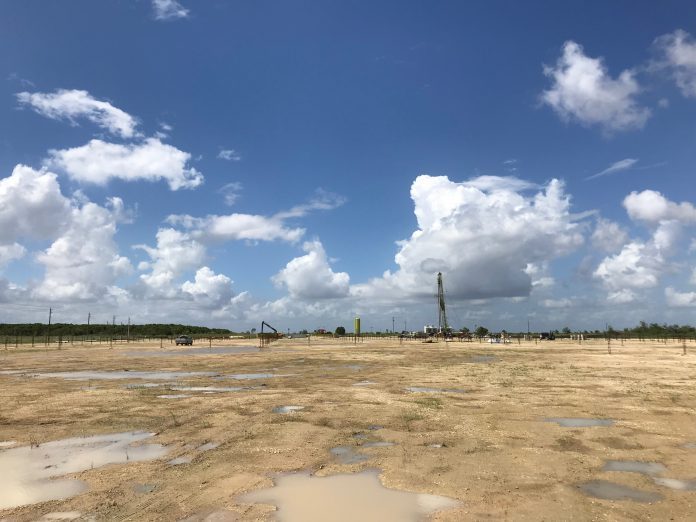And Atlantic Sapphire doesn’t intend to focus exclusively on farming Atlantic salmon.
Johan E. Andreassen (40) looks across the 80 acre building site, which is one-hour drive southwest of Miami. Here they are working at full speed, building the world’s largest fish farm – on land. The first construction stage aims at producing 8,500 tonnes of salmon; the second building step will see this increase by 20,000 tonnes, and the final stage of construction will ensure a total annual production of 90,000 tonnes.
If all three building stages are utilized and realized, Atlantic Sapphire will be the world’s fifth largest salmon farmer.
Opportunities
The area is surrounded by palm trees and tropical vegetation. Dark hawks sail over the treetops in search of something to eat.
Suddenly a heavy rain shower rolls over the area.
“Here in the Everglades, it rains much more than on South Beach. It’s raining just about every day,” Andreassen says, as he guides us into an office.
He is an optimist and sees huge opportunities in Florida.
“There are no limitations on growth here. If we make it, it’s unlimited growth. We can feed the entire United States from this area.”
The US market annually consumes 400,000 tonnes of Atlantic salmon – the equivalent of world-leading salmon farmer Marine Harvest’s global production. No other single market is larger.
Today, this market is predominantly served by Chilean farmers flying the fish 6,700 kilometers, from Santiago to Miami, every day. Accordingly, if Atlantic Sapphire succeeds in its farming plans, it is the Chileans who will feel it the most.

Several facilities
“We can buy a new plant of 80 acres – and yet another,” says Andreassen.
“Do you have a first mover advantage?”
“We have both a first mover advantage and disadvantage; we have no one to learn from,” he says. He believes that they must learn from trial and error.
At the same time, he’s open to the idea of farming other species of fish.
“We can produce other species. We can produce trout or char. Both of these species are more robust than Atlantic salmon. This concept is not limited to Atlantic salmon. We can produce sea bass and sea bream if we want to.”
More baskets
“The construction concept is designed so that we actually have 13 different fish farms. In Denmark, we have all our eggs in one basket,” he says, referring to Atlantic Sapphire subsidiary Langsand Salmon.
“Money is no limit, if this actually works and proves profitabie?”
“No, money is no limit.”
“We’ve got a lot of media attention down here. Agricultural funding over here is very concerned with yield per acre, and in that area we score high. We can produce 1,000 tons of salmon per acre. To satisfy demand in the entire United States, salmon production needs 500 acres. That’s less than one percent of the area of Miami. So when I hear Alf-Helge Aarskog (Marine Harvest CEO, Editor’s Note) and others say there is not enough space for land-based salmon, I shake my head.”
“Many say that this is too energy-intensive. That it requires too much energy to pump water. To that I have to say that if one is going to consider carbon footprint, one has to take into consideration the final plate the fish lands on. The fish is not consumed on Froya or Sunnmore (Norway, Editors note). It is eaten in Shanghai or New York. And then the calculation changes.”
Migrating
Although the plant is built half an hour from the coast, it is possible to pump both saltwater and freshwater from the ground, due Florida’s unique geology.
- Read also: ‘It’s an inexhaustible source’
On the table in front of him, stone and shells are located from every ten feet down in the ground at which the plant is built.
“All the way down there are shells. The ground is completely built of shells. There is hard ground to stop water from migrating up or down. You can not find this anywhere else in the world. It produces a low carbon footprint. At the same time, government regulations are light and we are considered environmentally friendly,” he says – with the Monterey Bay Aquarium’s quality stamp visible on his cap.

